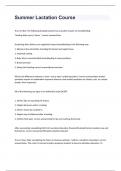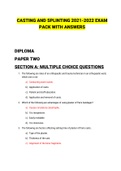Summary
Industrial economics summary that got me a 9.5 for the final exam!
- Course
- Institution
- Book
All lectures summarised including some extra intuitive understandings behind the models/ mathematics. Sometimes I refer to the slides (4 to 5 times) because it is a lot of mathematics which can be seen from there too. Overall, very elaborate summary which can help you understand the concepts/int...
[Show more]













